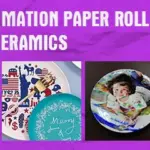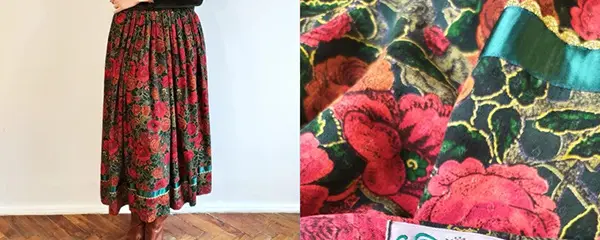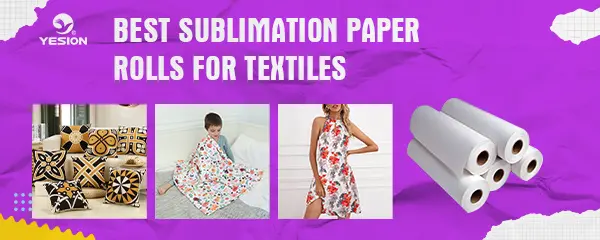
Best Substrates for UV DTF Printing
2024-08-23
Sublimation paper for ceramics
2024-08-30In the world of textile printing, achieving vibrant, long-lasting prints is crucial for both hobbyists and professionals. Sublimation printing stands out as one of the most effective methods for producing high-quality designs on fabrics. However, the quality of the final product is largely dependent on the sublimation paper used. Choosing the best sublimation paper rolls for textiles can make a significant difference in the vibrancy, sharpness, and durability of your prints. In this article, we will delve into the top choices for sublimation paper rolls that will help you create stunning fabric prints.
Why Sublimation Paper Rolls Are Essential for Textile Printing
Sublimation paper rolls are specially designed to transfer dye onto fabrics through heat and pressure. The paper holds the ink in place until the heat is applied, allowing the ink to penetrate deeply into the fibers of the fabric. This results in prints that are not only visually striking but also resistant to fading and wear. When selecting sublimation paper rolls, it’s important to consider factors such as ink absorption, transfer efficiency, and paper thickness to ensure optimal results.
Top Features to Consider When Choosing Sublimation Paper Rolls
1. Ink Absorption Capacity
The ink absorption capacity of sublimation paper is critical for achieving rich, vibrant colors. High-quality sublimation paper rolls are designed to absorb the maximum amount of ink without bleeding or smudging, ensuring that every detail of your design is accurately transferred to the fabric.
2. Transfer Efficiency
Transfer efficiency refers to the paper’s ability to release the ink onto the fabric without leaving any residue. A good sublimation paper will have a high transfer rate, meaning that most of the ink is transferred from the paper to the fabric, resulting in a more vivid and accurate print.
3. Paper Thickness
The thickness of the sublimation paper can impact the quality of the transfer. Thicker papers tend to hold more ink and provide better transfer results, especially for detailed designs. However, they may also require higher heat and pressure settings during the transfer process.
4. Compatibility with Fabric Types
Not all sublimation papers are compatible with every type of fabric. It’s important to choose paper rolls that work well with the specific textiles you plan to print on. For example, some papers are optimized for polyester fabrics, while others may work better on cotton blends or other synthetic materials.

sublimation textiles
5. Roll Width and Length
The size of the sublimation paper roll is another important consideration, especially for large-scale printing projects. Rolls that are wider and longer can accommodate larger designs and reduce the need for frequent paper changes, increasing efficiency and reducing waste.
Top Choices for Sublimation Paper Rolls for Textiles
A-Sub Sublimation Paper Roll
A-Sub is a well-known brand in the sublimation printing industry, and their sublimation paper rolls are among the best for textile printing. These rolls offer excellent ink absorption and transfer efficiency, making them ideal for producing vibrant, detailed prints on a variety of fabrics. A-Sub paper is also compatible with a wide range of sublimation printers, making it a versatile choice for both beginners and experienced printers.
Yesion Sublimation Paper Roll
Yesion is another trusted name in the sublimation printing industry, and their sublimation paper rolls are a top choice for textile printing. Yesion’s sublimation paper is known for its excellent ink absorption and high transfer rate, which helps to produce bright, detailed prints. Additionally, Yesion sublimation paper rolls are compatible with a wide range of fabrics, making them a versatile option for various printing projects.
Yesion dye sublimation paper print with Epson sublimation printer
How to Achieve the Best Results with Sublimation Paper Rolls
1. Choose the Right Printer and Ink
To achieve the best results with sublimation paper rolls, it’s important to use a high-quality sublimation printer and compatible ink. Using the right printer and ink combination can greatly improve the vibrancy and durability of your prints.
2. Optimize Your Printer Settings
Adjusting your printer settings to match the specifications of your sublimation paper can also help to achieve better results. For example, increasing the print resolution and adjusting the color profile can help to produce sharper, more accurate prints.
3. Use the Correct Heat Press Settings
The heat press settings, including temperature, pressure, and time, are crucial for achieving a successful transfer. Be sure to follow the manufacturer’s recommendations for your sublimation paper and fabric type to ensure that the ink is fully transferred and the colors are vibrant.
4. Test and Adjust as Needed
Before printing your final design, it’s a good idea to run a test print on a scrap piece of fabric. This will allow you to make any necessary adjustments to your printer or heat press settings before committing to the final print.
Choosing the best sublimation paper rolls for textiles is essential for achieving vibrant, long-lasting prints on fabrics. By considering factors such as ink absorption, transfer efficiency, paper thickness, and compatibility with your specific fabric type, you can ensure that your prints are of the highest quality. Whether you’re a hobbyist or a professional printer, investing in high-quality sublimation paper rolls will help you create stunning fabric prints that stand the test of time.
Related:
Can sublimation paper be used on any type of fabric?
High-Quality Sublimation Paper Rolls

